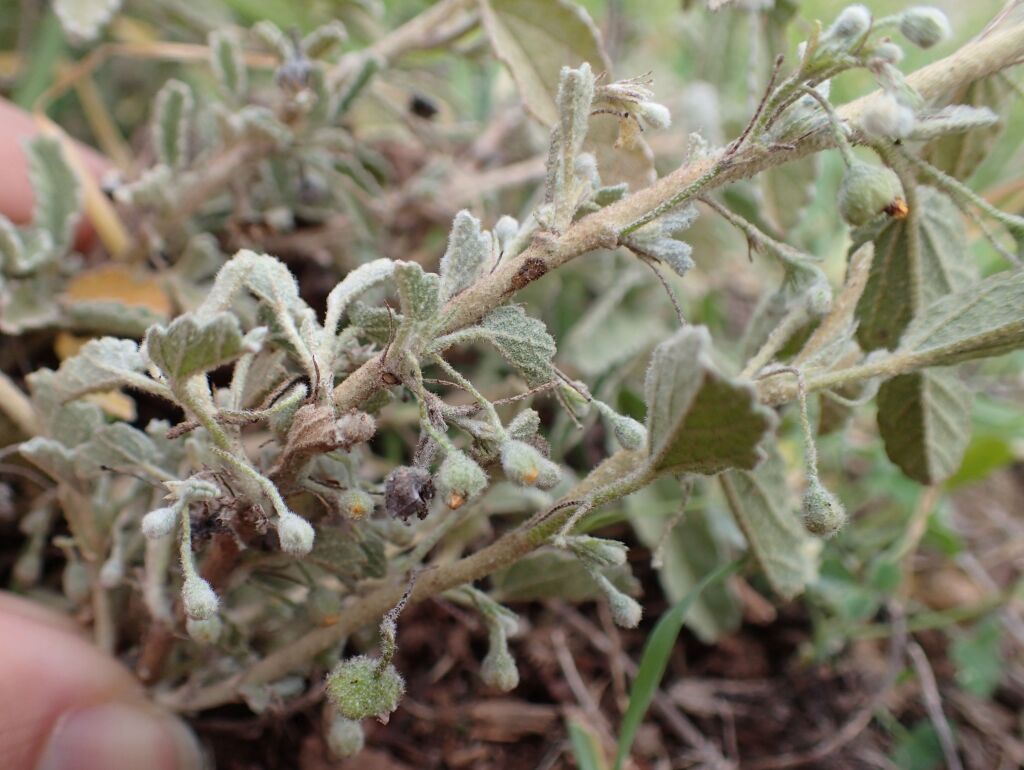Sida fibulifera
Lindl. Pin SidaSpreading shrub 12–35 cm high, to 50 cm wide; branches densely stellate-hairy. Leaves narrowly to broadly ovate, to 40 mm long and 20 mm wide, rounded or subcordate at base; margins serrate; surfaces greyish above, paler and more densely pubescent below; stipules 6–9 mm long, persistent. Flowers in racemes or solitary; pedicels not exceeding leaves; calyx unribbed, divided to above midway; lobes 1–1.7 mm long; petals spreading, 3–5.5 mm long, emarginate; styles (5–)7–8. Fruit transversely elliptic, 3.5–6.5 mm diam., smooth, pubescent, rounded or acuminate apically; mericarps 2–3 mm high, reticulate on lateral wall, splitting narrowly in 2 at apex, unawned. Flowers usually spring or autumn.
LoM, MuM, Wim, VRiv, MSB, RobP, MuF. All mainland states. Apparently confined to red loam or clay loam soils near the Murray River between Hattah-Kulkyne and Mildura, but depleted by clearing.
A variable species in appearance and in flower and fruit size. It can be prostrate or bushy, and leaves and stems may vary from grey to green or dark green depending on indumentum density. The usually racemose inflorescences and persistent long stipules combined with the mericarp number serve to distinguish this species from others in Victoria.
Barker, R.M. (1996). Sida. In: Walsh, N.G.; Entwisle, T.J., Flora of Victoria Vol. 3, Dicotyledons Winteraceae to Myrtaceae, pp. 340–345. Inkata Press, Melbourne.
 Spinning
Spinning


